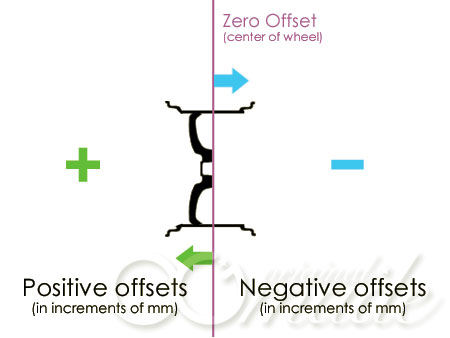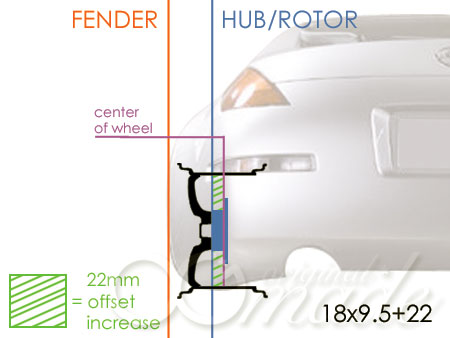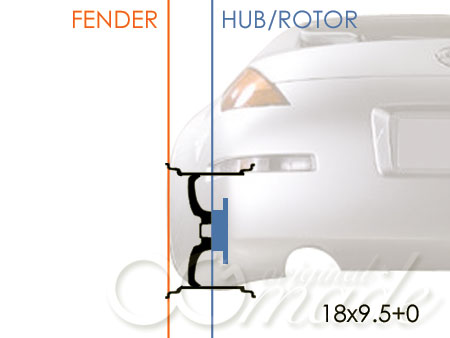Offset Explained
Zero Offset
The hub mounting surface is even with the centerline of the wheel.
Positive
The hub mounting surface is toward the front or wheel side of the wheel. Positive offset wheels are generally found on front wheel drive cars and newer rear drive cars.
Negative
The hub mounting surface is toward the back or brake side of the wheels centerline. “Deep dish” wheels are typically a negative offset.
If the offset of the wheel is not correct for the car, the handling can be adversely affected. When the width of the wheel changes, the offset also changes numerically. If the offset were to stay the same while you added width, the additional width would be split evenly between the inside and outside. For most cars, this won’t work correctly.

Keep in mind that these pictures are based on MULTIPIECE WHEELS. Cast wheels follow the same idea, but the drawings are made for multipiece wheels (since it shows lip size changing).

Rule of thumb: the lower the offset, the further the wheel moved OUTWARD of the fender, and vice versa. As you can see, the orange line demonstrates the fender position, and the blue line demonstrates the hub/rotor where the wheel mounts to. For general purposes, let’s say this wheel is a 18×9.5+0 (images are not drawn to scale). As you can see, the outer position is “flush” (even) with the outer fender imaginary line (shown in orange). Also take note of the size of the outer lip of the wheel. Let see what happens if we raise the offset of the wheel…

So instead of a 18×9.5+0, let’s try to run a 18×9.5+22 and see what happens. As you can see, if you change the offset of a wheel from a +0 to a +22, the overall position of the wheel is going to move INWARD 22mm. As you can see by the area shown in green, that is the 22mm that the wheel backpad moved between the two sizes. Since the wheels shown are multipiece, the face of the wheel moves inside the barrel to change offsets, rather than adding more material to the wheel backpad. In addition, notice that the lip size decreased when the offset increase. Generally speaking, one can assume that the lip size decreases when the offset increases, but sometimes it might not be the case (depending on face design, but that’s gonna get confusing).
So what have we learned?
– Lowering the offset: the more it moves outward from the fender (”more flush”)
– Raising the offset: the more it moves inward inside the fender (”more sunk”)
Wheel offset calculator: http://www.1010tires.com/WheelOffsetCalculator.asp
info collected from http://www.og-made.com